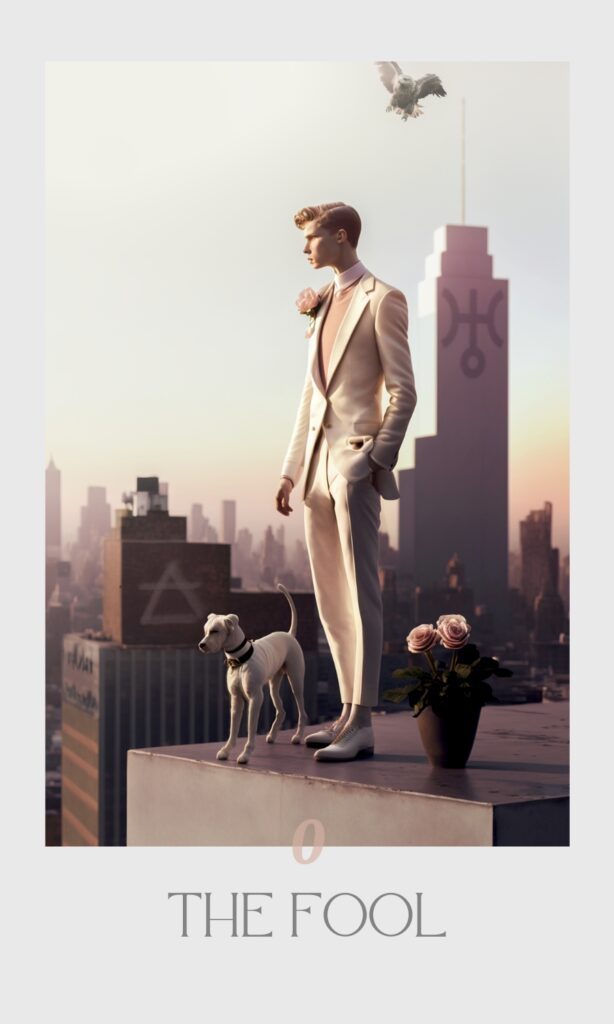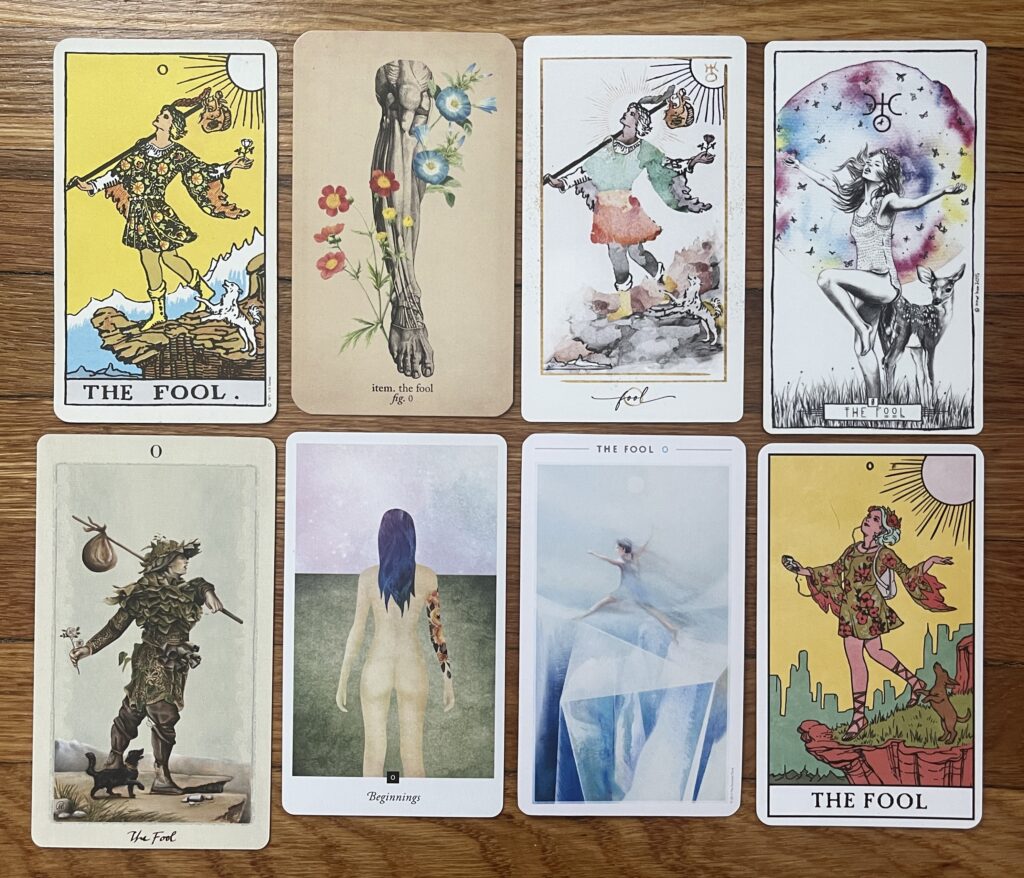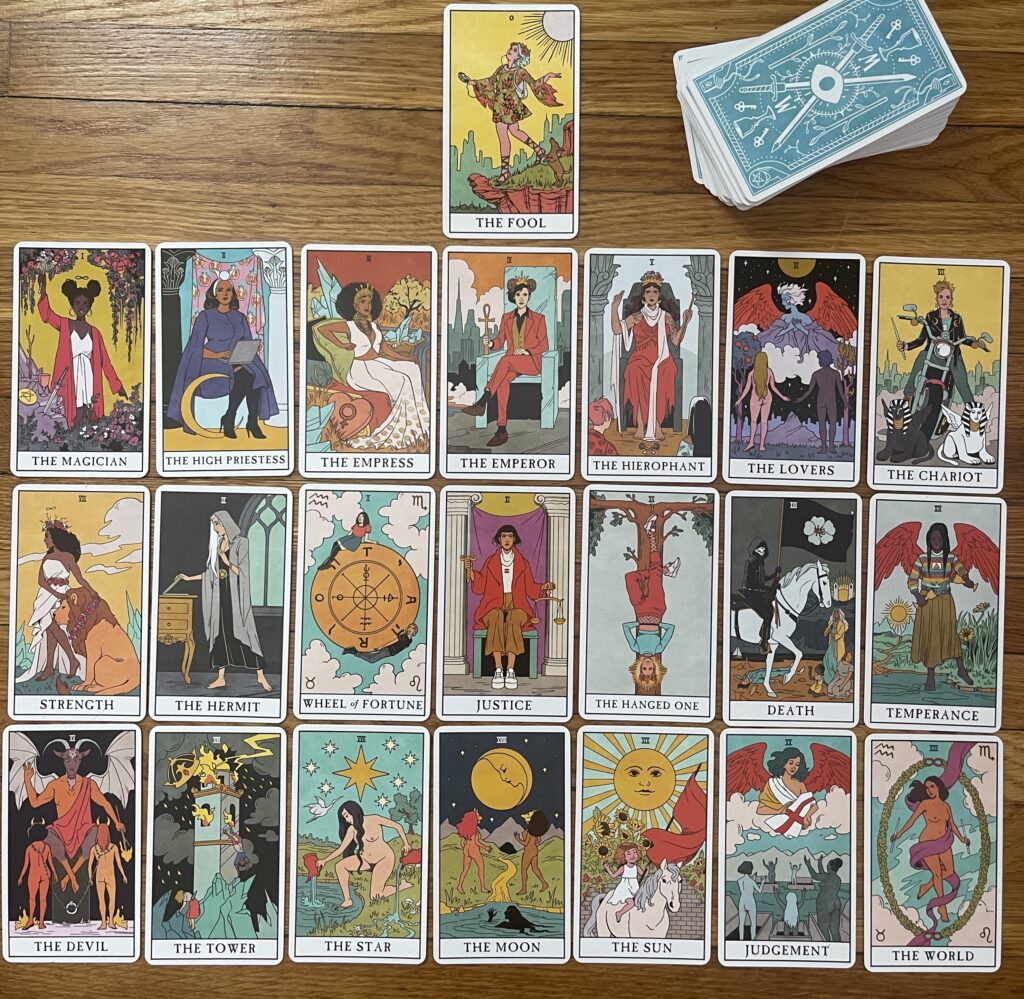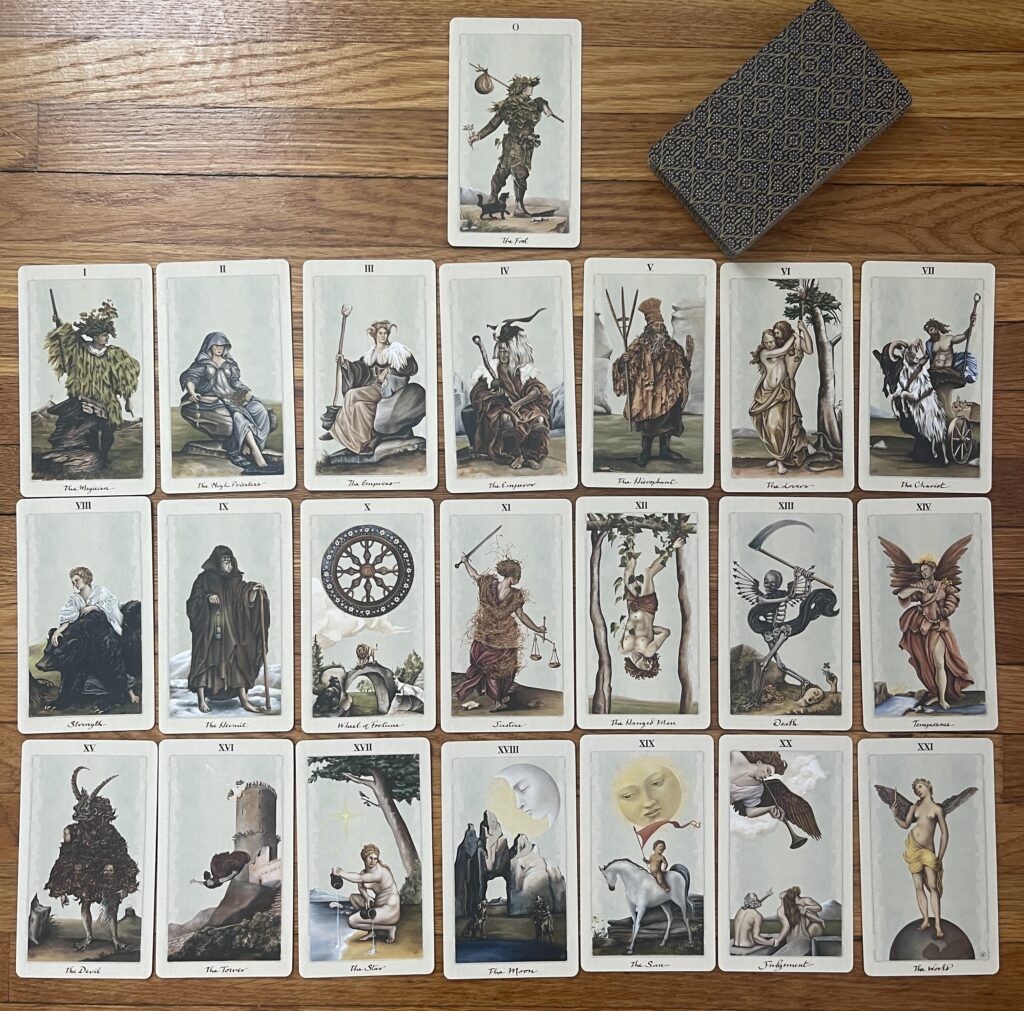
Welcome to the Fool’s journey, experienced through the Saga Modernai Tarot.
In this post I’ll outline the basics of the RWS tarot system, offer an overview of the Fool’s journey, and share how you can join us on this adventure.
The Rider-Waite-Smith Tarot
Shrouded in symbolism and archetypal imagery, tarot is a portal into a mystical world of introspection that dates back to the 15th century. There are tons of misconceptions around this tool, many of which I’ll break down here as we go along.
The tarot info you’ll find here is based on the Rider-Waite-Smith (RWS) Tarot.
The RWS Tarot deck was created in 1909 by artist Pamela Colman Smith and author Arthur Edward Waite. The deck consists of 78 cards, each with its own symbolism and meaning.
The Fool is the first of 22 cards in the Major Arcana, and it begins the Fool’s journey through life’s major archetypal energies. The remaining 56 Minor Arcana cards focus on everyday life events and situations.
What is the Fool’s Journey?
The Fool’s journey is a mystical and transformative experience that mirrors our own journey through life, with its ups and downs, twists and turns. As we navigate this journey, the tarot provides a guide to help us gain clarity and insight into the path ahead.
It is a representation of the human experience, and the archetype of the Fool is a universal symbol of the human quest for self-discovery, growth, and enlightenment.
The Fool is represented by a figure of a young man or woman, often dressed in colorful clothing and carrying a stick or bundle over their shoulder. This symbolizes the beginning of a new journey, a leap of faith into the unknown, and the willingness to take risks and make mistakes.

The Fool’s journey is also influenced by other archetypes, such as the Magician, High Priestess, Empress, Emperor, Hierophant, Lovers, Chariot, Strength, Hermit, Wheel of Fortune, Justice, Hanged Man, Death, Temperance, Devil, Tower, Star, Moon, Sun, Judgment, and World. Each archetype represents a different aspect of the human experience, and together they form a powerful narrative of self-discovery and growth.
The Saga Modernai Tarot is my take on this ancient story.
Rachel Pollack and the Fool’s Journey
Rachel Pollack is a renowned tarot scholar and author who has written extensively about the tarot and its symbolism. One of her key ideas is that the Major Arcana cards of the tarot represent three distinct areas of life experience: the conscious, the subconscious, and the superconscious.
According to Pollack, the conscious realm is represented by the first seven cards of the Major Arcana, which deal with issues related to love, education, and the challenges of the material world. These cards are often associated with the ego and with external factors that influence our lives, such as social norms and cultural expectations.
The subconscious realm, on the other hand, is represented by the next seven cards of the Major Arcana, which deal with issues related to the inner self, followed by a symbolic death and rebirth.

“Temperance at the end represents that part of ourselves which we discover to be essentially real after the illusions of ego, defensiveness, and rigid habits of the past are allowed to die away,” she says in 78 Degrees of Wisdom.
Finally, the superconscious realm is represented by the last seven cards of the Major Arcana, which deal with issues related to transcendence, enlightenment, and the divine. These cards are often associated with the soul and with higher states of consciousness that can be accessed through meditation, prayer, or other spiritual practices.
By dividing the Major Arcana into these three distinct areas of life experience, Pollack suggests that the tarot can provide a framework for exploring different aspects of the self and for gaining a deeper understanding of the human experience.

So Now What?
These are some big, generalized basics, folks.
Here’s what you can expect:
-I’ll be releasing one card from my Saga Modernai Tarot deck, both here on the blog AND as a limited NFT collection. New mints are announced via Substack.
-When the full deck is released, it will be for sale in print and announced on Substack.
-I’ll dive into a deeper exploration of each card that’s released, including free spreads, key journal prompts, and history nuggets.
-Finally, I’ll still be offering my Monday pick-a-card readings on the Substack.
You’ll receive a couple of emails a week, and nothing spammy, promise.